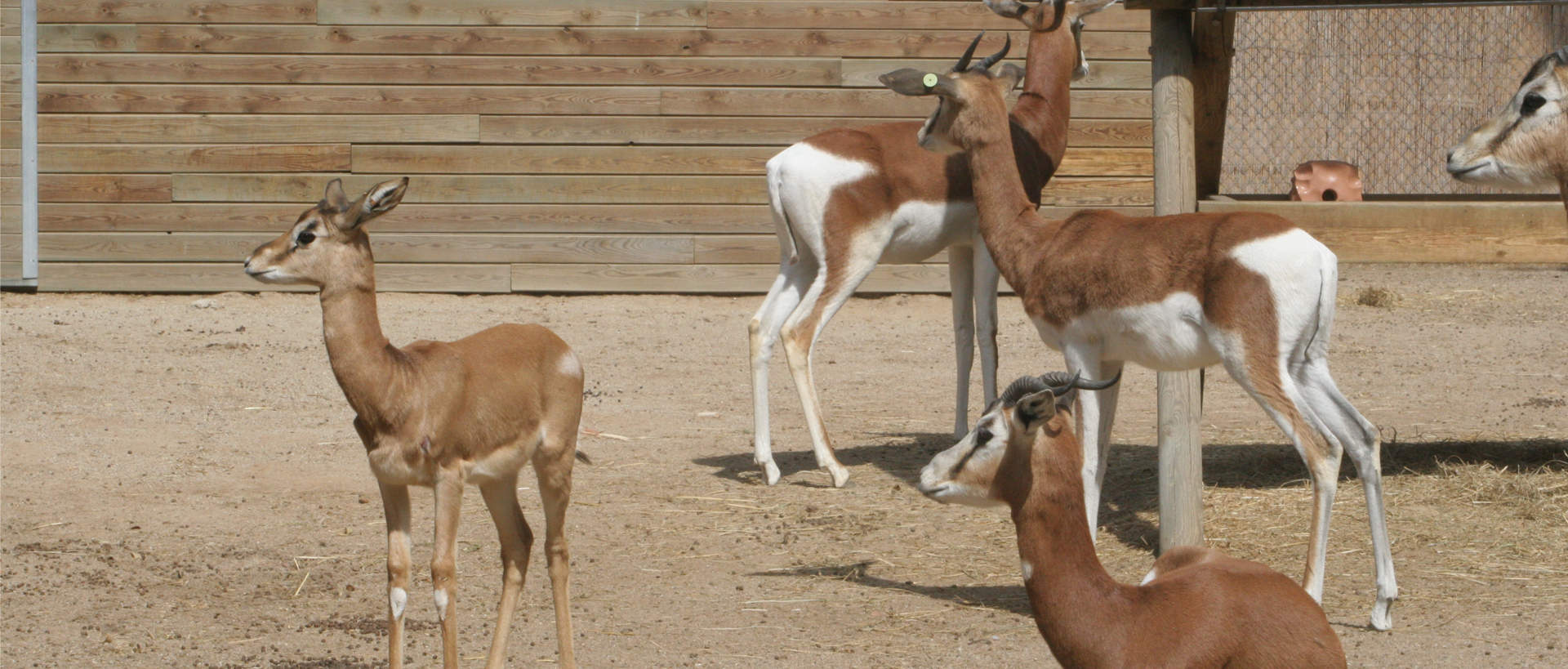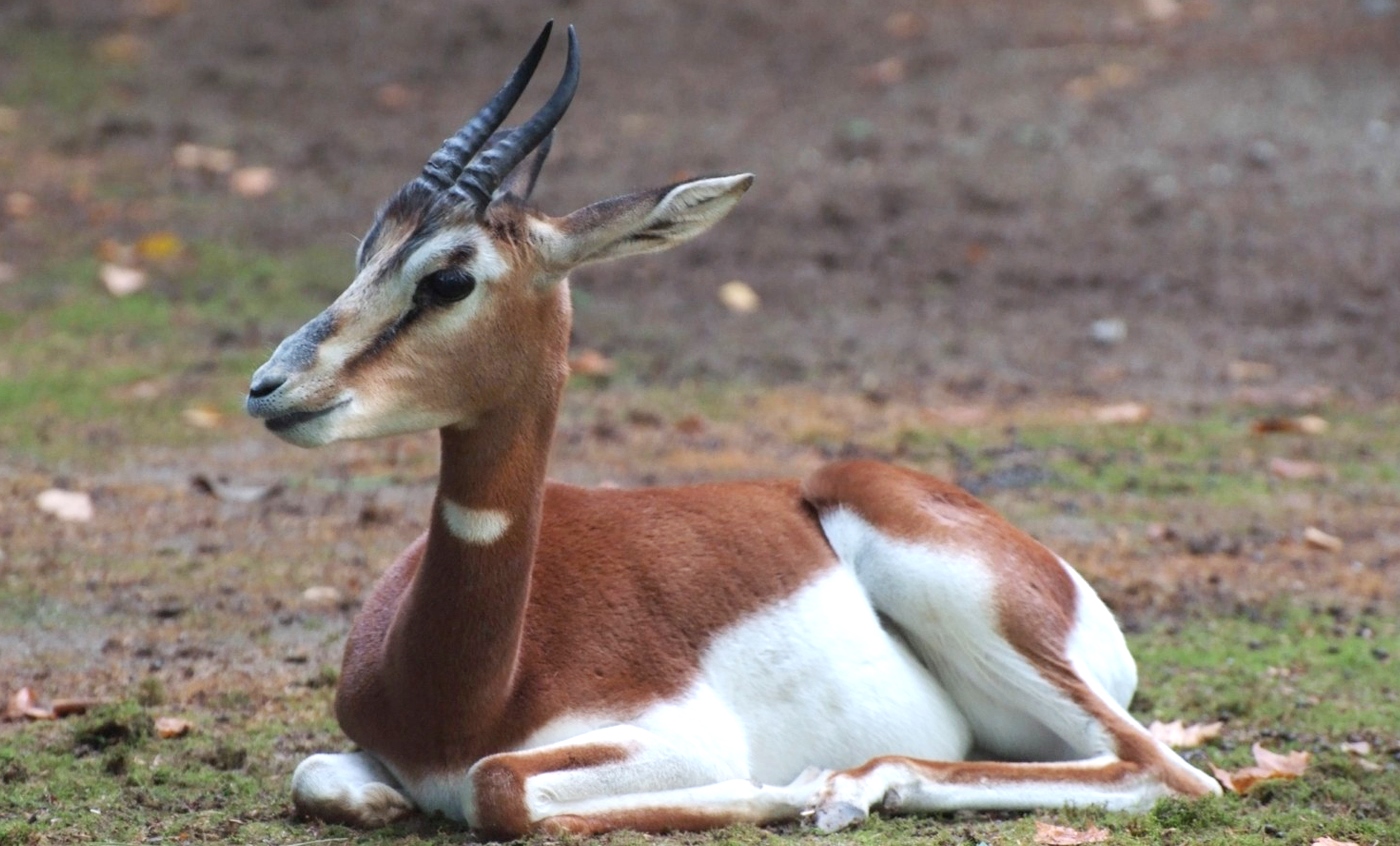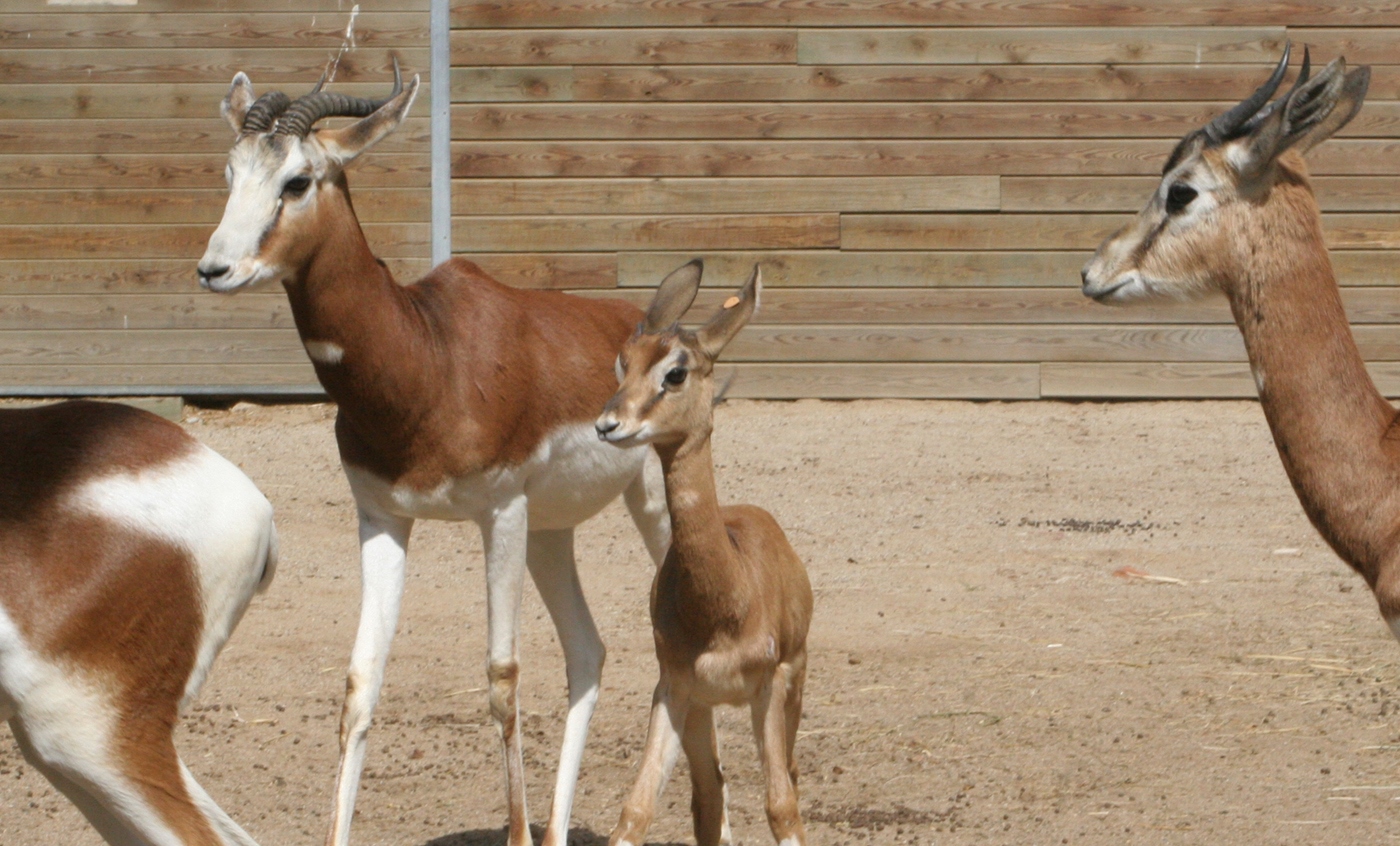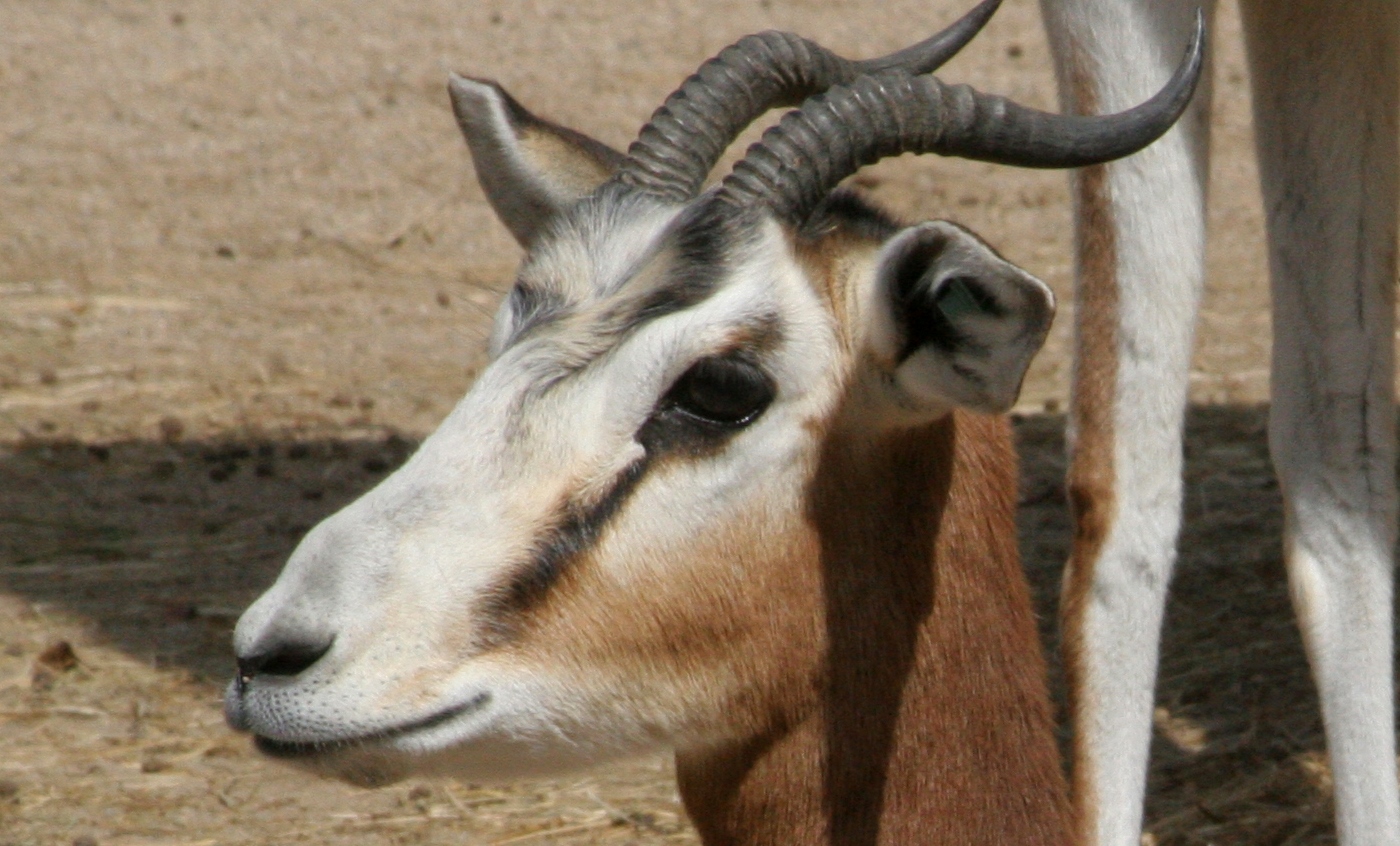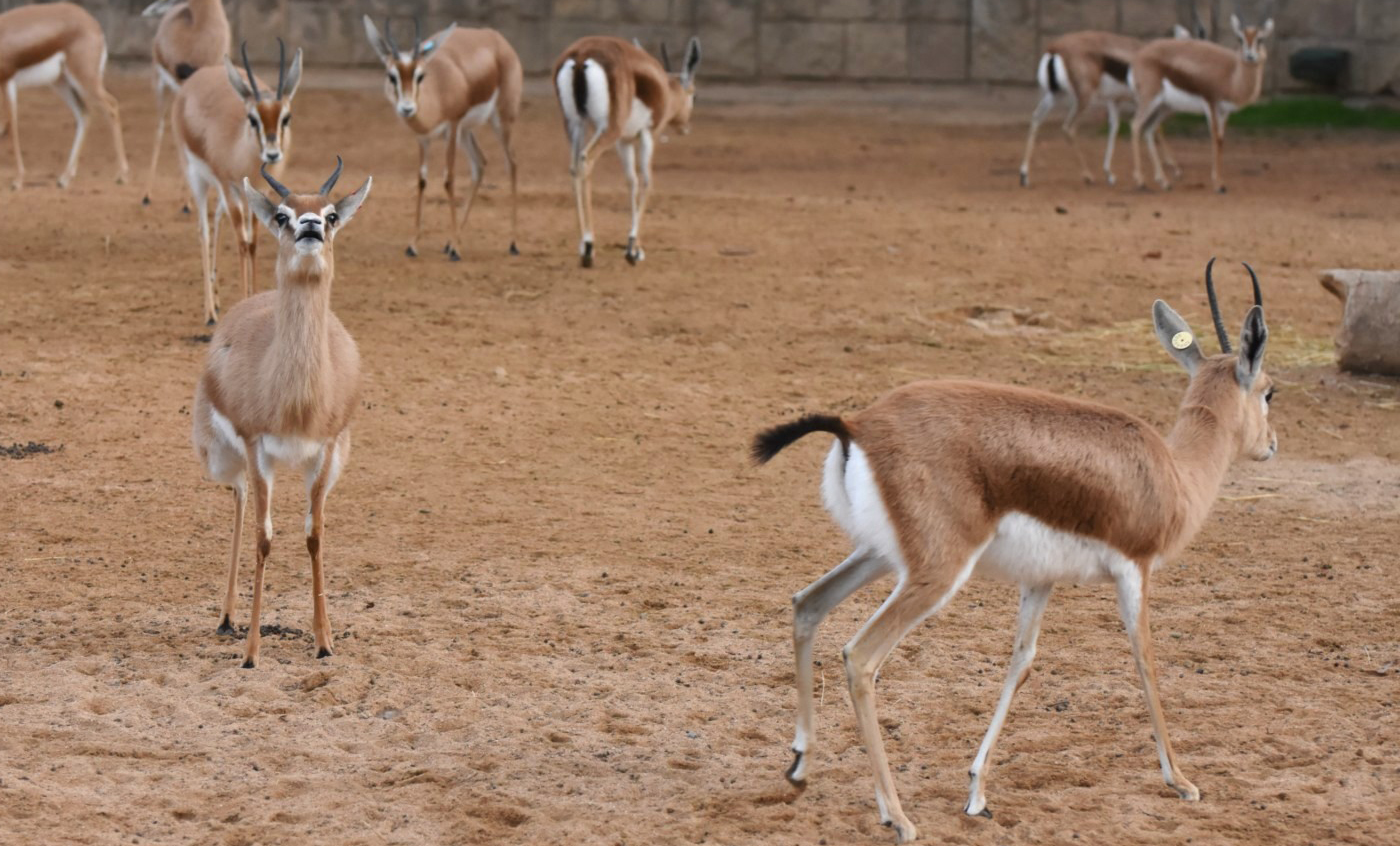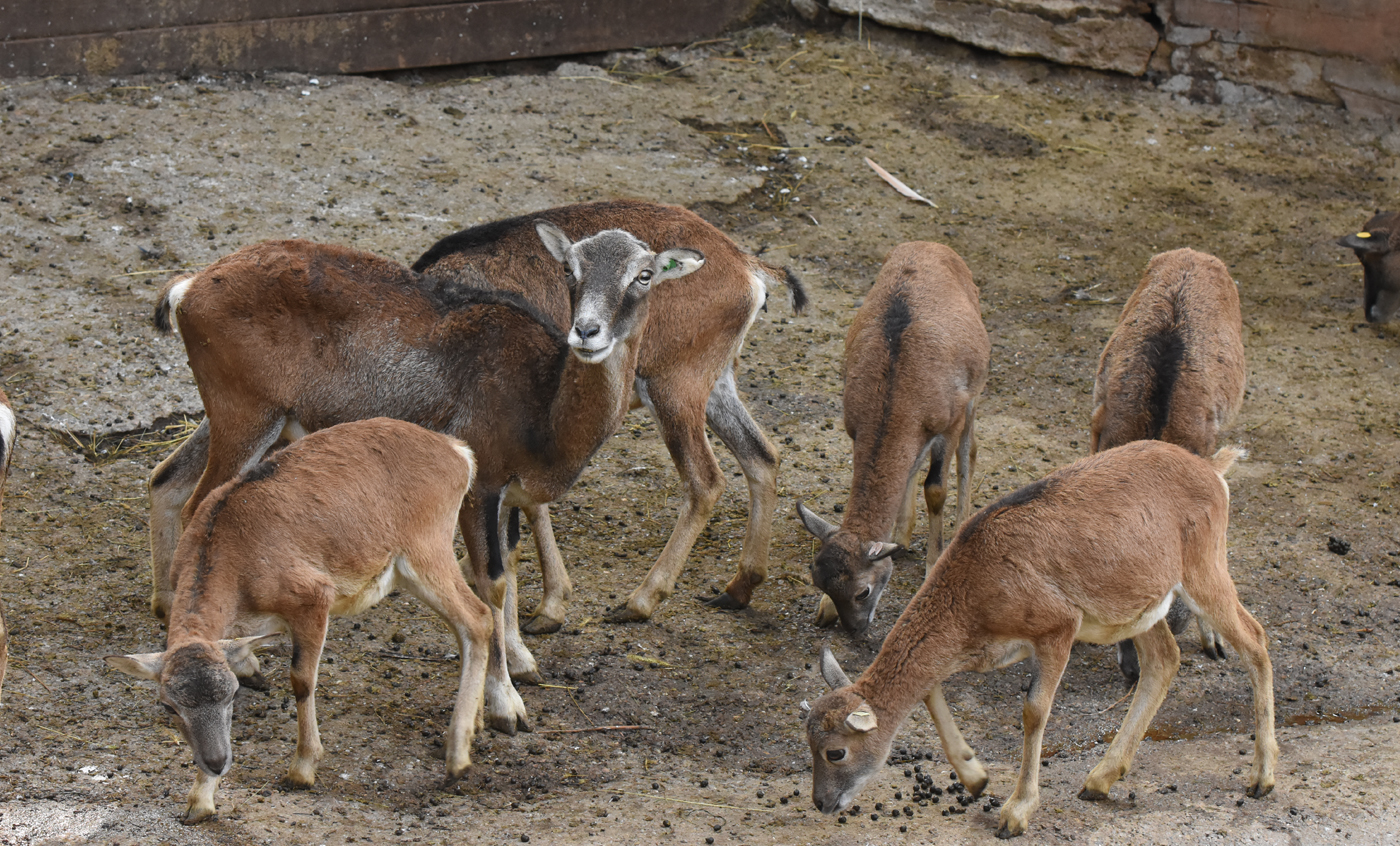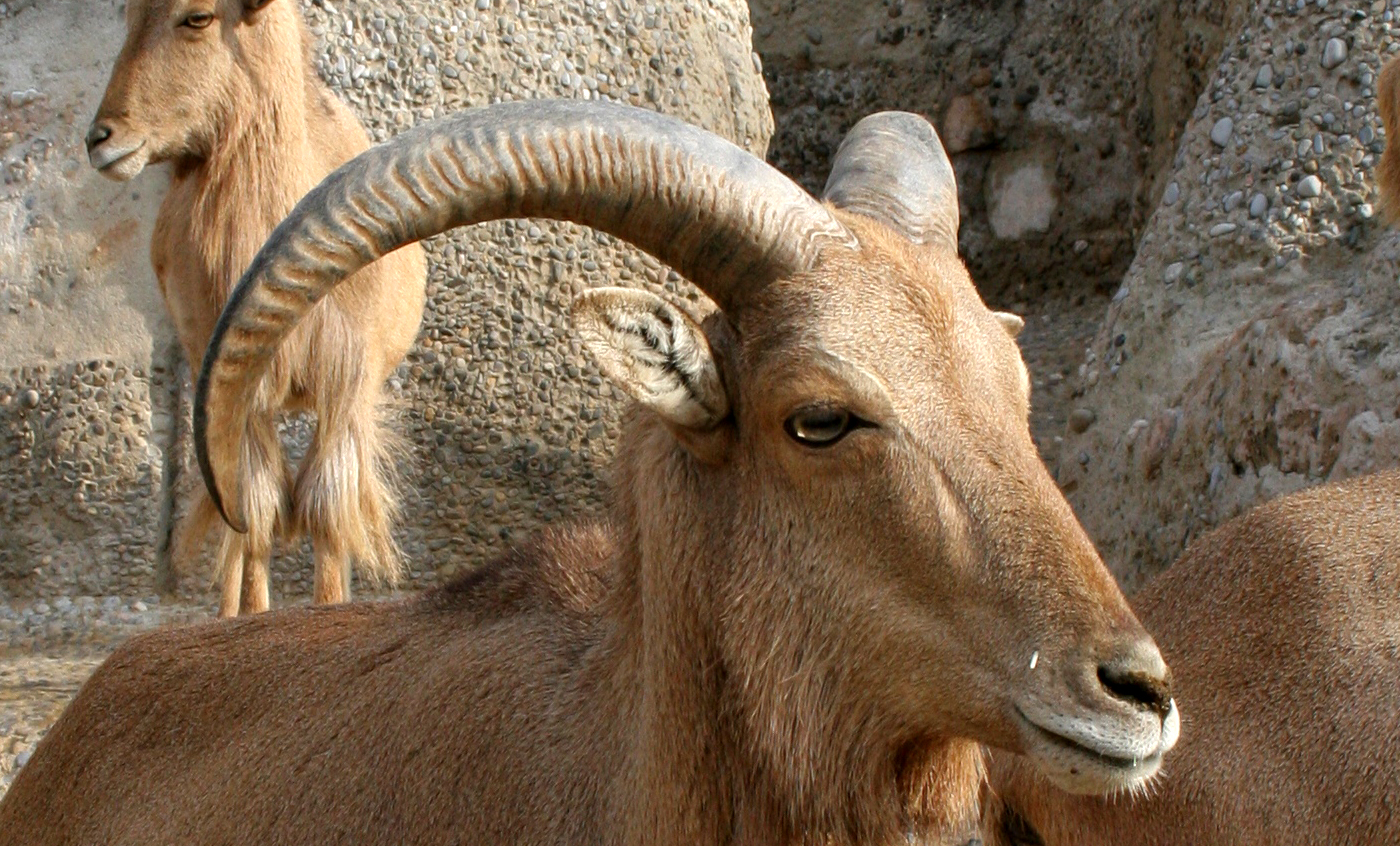Mohor gazelle
This species is a subspecies of the dama gazelle, which inhabits the sub-desert areas of southern Morocco and western Sahara.
It is extint in the wild and on 1971 the Experimental Station of Arid Zones of Almeria, under CSIC (Spanish National Research Council), started its captive breeding, whose success has allowed its reintroduction to Senegal, Morocco and Tunisia.
Breeding program
Natural habit
From southern Morocco to western Sahara and Senegal.
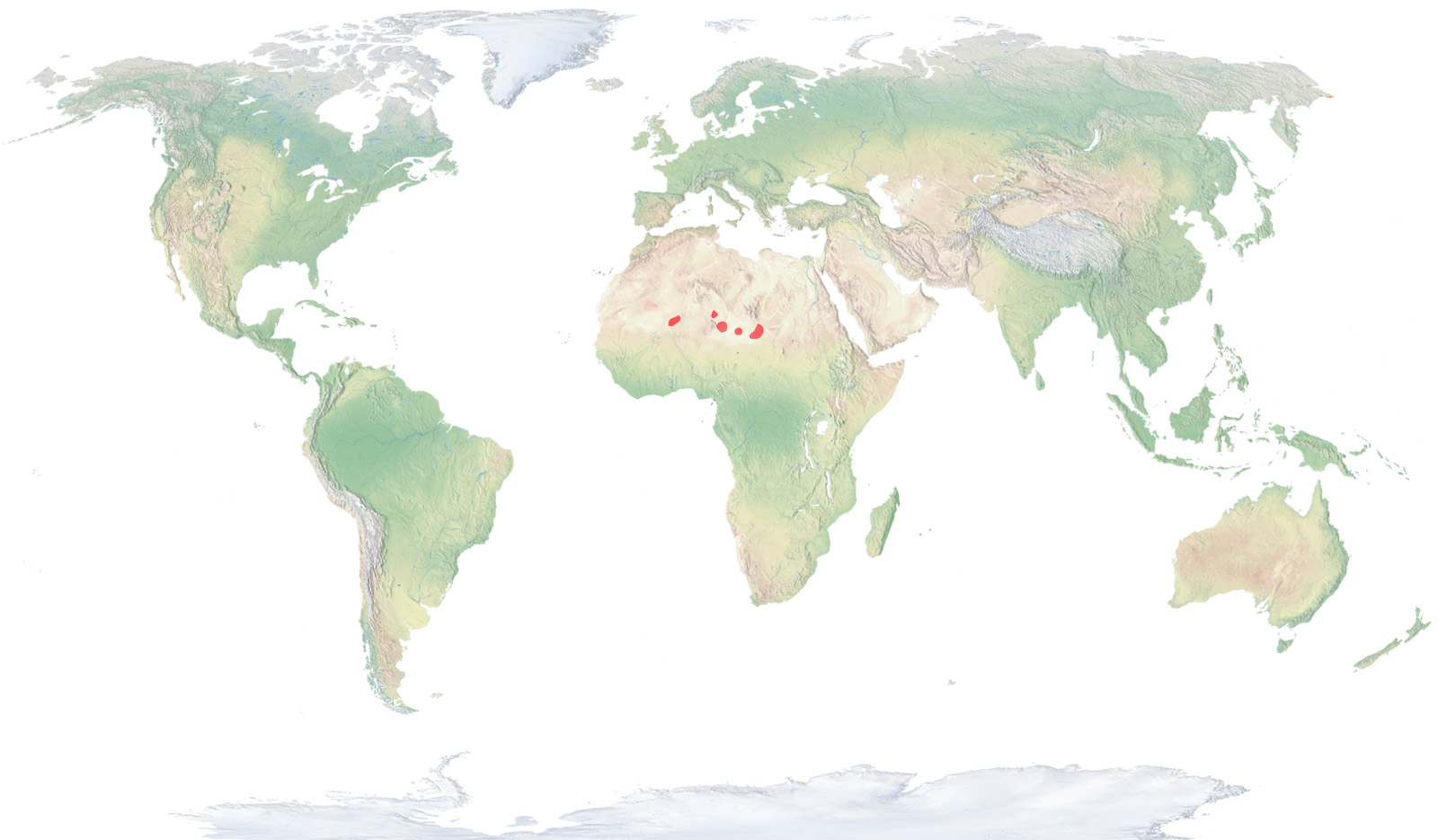
- Distribution / Resident
- Breeding
- Wintering
- Subspecies
Risk level
- Extint
- Extint in the wild
- Critically endangered
- In Danger
- Vulnerable
- Near threatened
- Minor concern
- Insufficient data
- Not evaluated
Taxonomy
Physical characteristics
Biology
Reproduction
Biology
The dama gazelle is an antelope of medium size, thin, slender, with considerably long neck and legs. Although bigger and thicker in males, both sexes have horns, which are rather short, between 20 and 43 cm long. Its neck and back has a brown reddish colour, while its head, lower part of the body and tail are white.
Sub-desert areas of northern Africa.
It is an herbivore that feeds on grass, seeds and leaves from bushes and trees such as acacias, which it can reach by raising itself on the rear legs. It is adapted to the extremely dry environment it inhabits, and it can spend long periods without drinking water.
Gestation lasts for about six months and generally a single calf is born each time. During the first days the calf lays quietly in order to go unnoticed. If the mother watches predators nearby, it runs and moves noticeably towards another direction, in order to keep them far from the calf’s position.
It is a diurnal animal that lives in small herds of less than a dozen individuals, formed by an adult male, several females and young calves, although sometimes they can form larger groups. It has nomad habits, always moving in the search for the scarce trophic resources found in their native habitat. Apart from human beings, the main predators of this species are hyenas, jackals, lions and cheetahs.
It is extint in the wild and on 1971 the Experimental Station of Arid Zones of Almeria, under CSIC (Spanish National Research Council), started its captive breeding program, in order to prevent its total extinction.
This program started with a male and six females, from a particular collection and its success has been such, that some individuals have been already freed to African national parks and many have been sent to different zoos around the world, among them the Zoo of Barcelona, that takes part in the EEP of this species.



